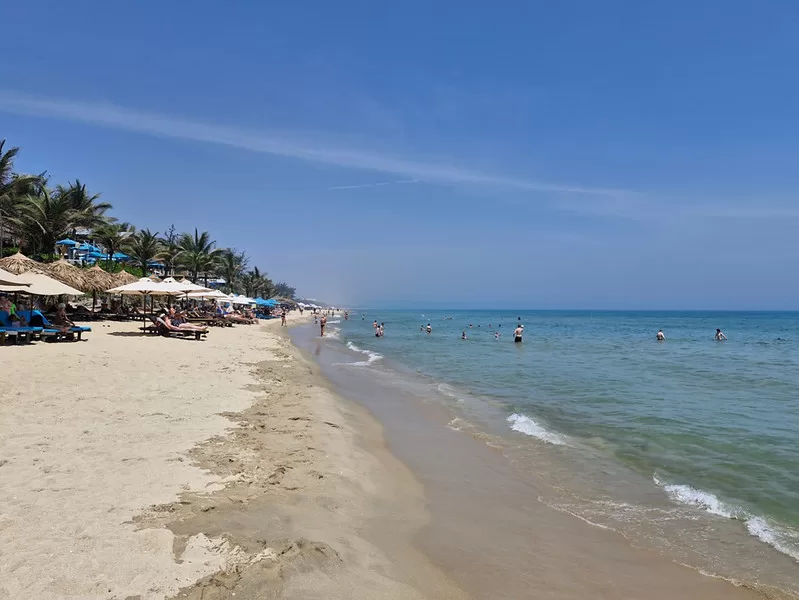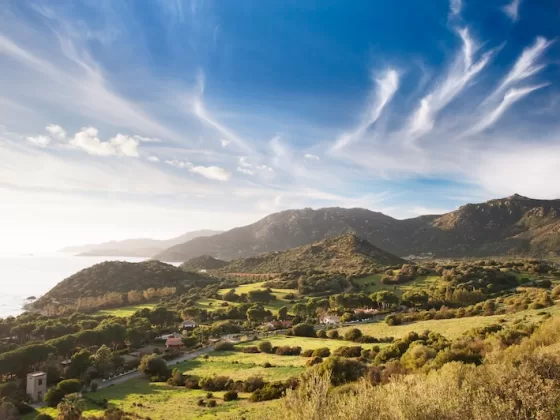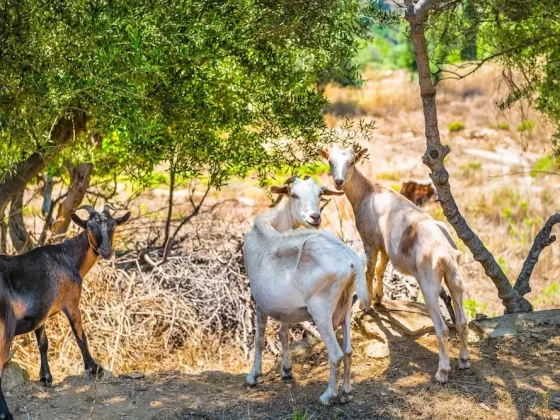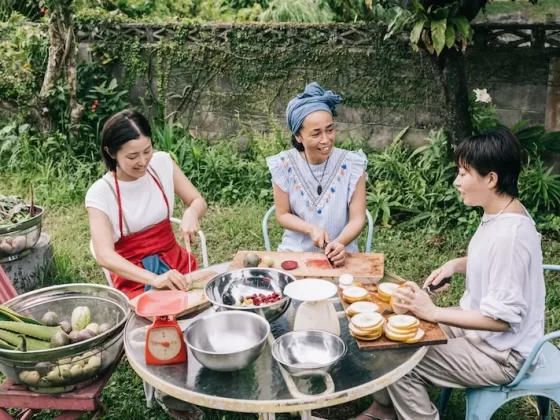Many readers may know that the city of Hoi An, in Central Vietnam, is home to the UNESCO World Heritage Ancient Town, one of the best-preserved trading ports in Southeast Asia. But what most people might not realize is that Hoi An’s neighborhoods also have some of the most beautiful beaches in the region. One in particular is An Bang beach. While technically within the Hoi An city limits, An Bang feels somehow removed from the hustle and bustle of the city, like a quaint village.
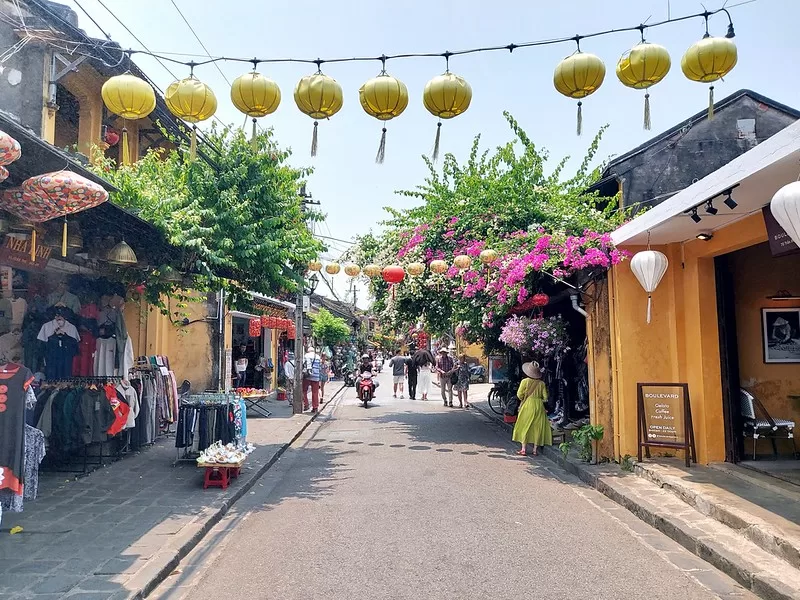
I’ve been coming to Hoi An for more than 20 years, and on my first few visits I didn’t even visit the beach. I figured “There are a lot of great beaches in Vietnam. but there is only one Hoi An,” so I would spend my time wandering the charming old town. It was only when I rented a motorbike and rode around the coast that I discovered that Hoi An’s beaches are particularly amazing. And in all my travels around Vietnam, An Bang stands out as one of the best small beaches in the country.
Not only that, for an Aussie traveler like myself, I was surprised and delighted to learn of An Bang’s small but vibrant expat community, which is where I now stay when I’m visiting Hoi An. Another great thing about An Bang is that it’s close enough to the old town without being in it. A nice respite from the tourist crowds which can be overwhelming at times.
Read more like this: Travel Tips for Expats
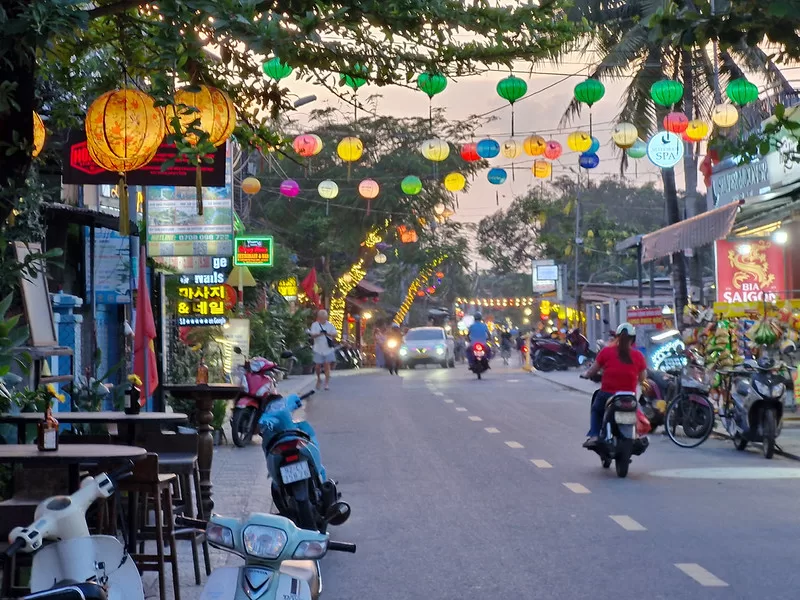
Where in the World is An Bang?
Located approximately 4 km from Hoi An’s old town, An Bang is separated from the city by a rice field that serves as a natural physical barrier, helping to prevent the old town crowds from creeping into An Bang.
An Bang beach stretches for roughly 30 km, from Hoi An all the way to Da Nang. You can see the skyline of Da Nang from the beach in An Bang. The coast has seen rapid development in recent years, and it is likely that Hoi An and Da Nang will merge into one urban area one day in the future.
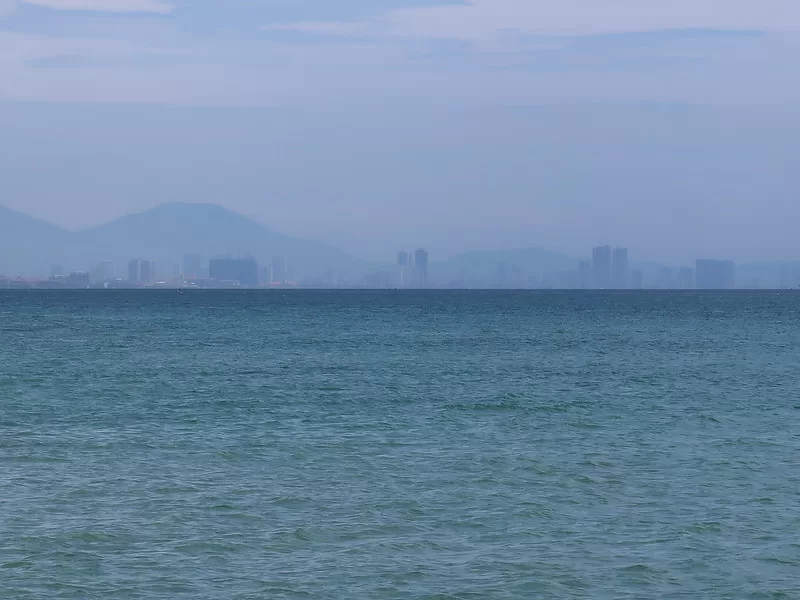
Luckily An Bang has mostly avoided being developed, due in part to its established location right among the sand dunes, and the many small roads that line the beachside. Given that An Bang is largely considered to be geographically unsuitable to build on, which has allowed it to retain its charm as a seaside town.
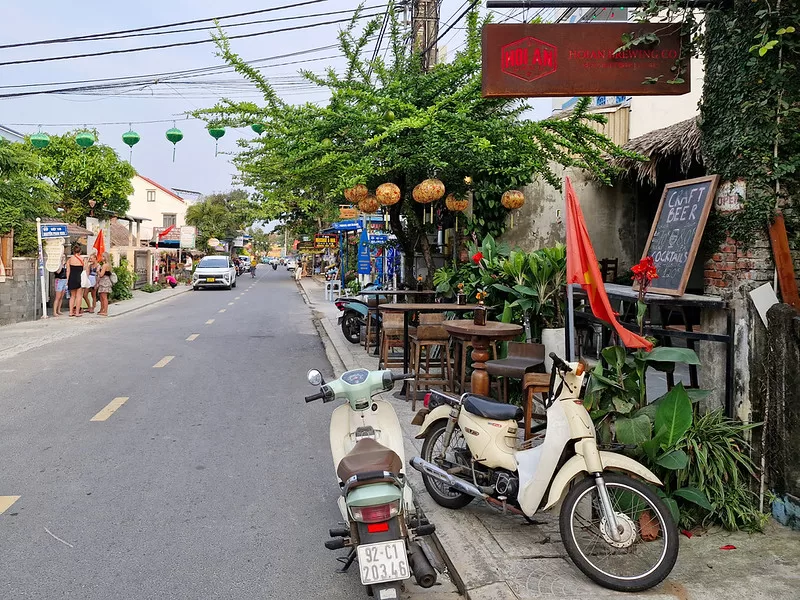
Developers tried to build a resort in one section of An Bang a few years back. The development included a resort that looked like a castle but was abandoned along the way when the area was deemed less than desirable. The castle shell still sits there, overlooking the beach, like a warning.
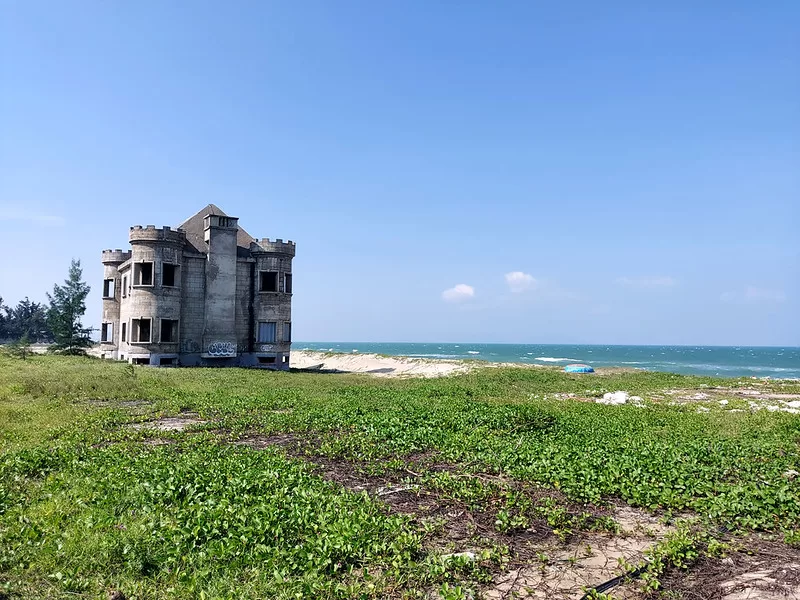
Today An Bang beach is mostly popular during the day with sunbathing Westerners. Hoi An locals descend on the beach at a more sensible time of day in the late afternoon. There are food vendors on the beach, and people bring their own supplies to relax after work or school.
The Best of Hoi An Without Being in Hoi An
If you are a first-timer to Hoi An, I always recommend staying near the old town, which allows you to come and go as you please, wandering the streets early in the morning or late at night when there are fewer tourists about.
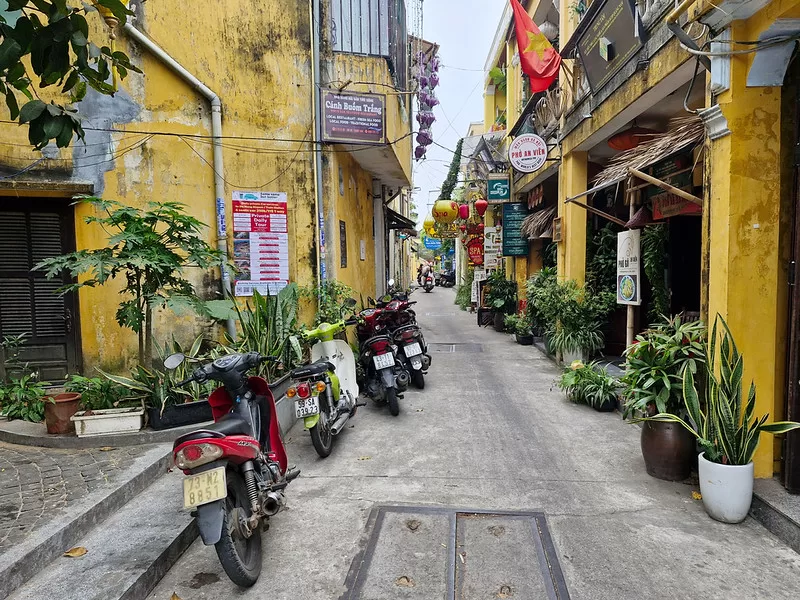
Meet the An Bang Locals
An Bang is largely a mix of long-term residents and short-term tourists. The long-termers aren’t easily categorized, like some other expat hotspots, so it’s hard to define who the average expat is in An Bang. But that’s part of its appeal. It’s not just retirees or young nomads, it’s a wide swath of different backgrounds and demographics.
There are also expats who have businesses in the old town who base themselves by the beach. Co-working spaces have opened here, catering to digital nomads looking for a slower pace of life compared to life in Da Nang.
Read more like this: Five Travel Essentials for Women
What to Eat
The local morning market is the main spot for fresh, vegetables, and local breakfast. There are also the usual Vietnamese street food stalls and restaurants serving delicious local cuisine.
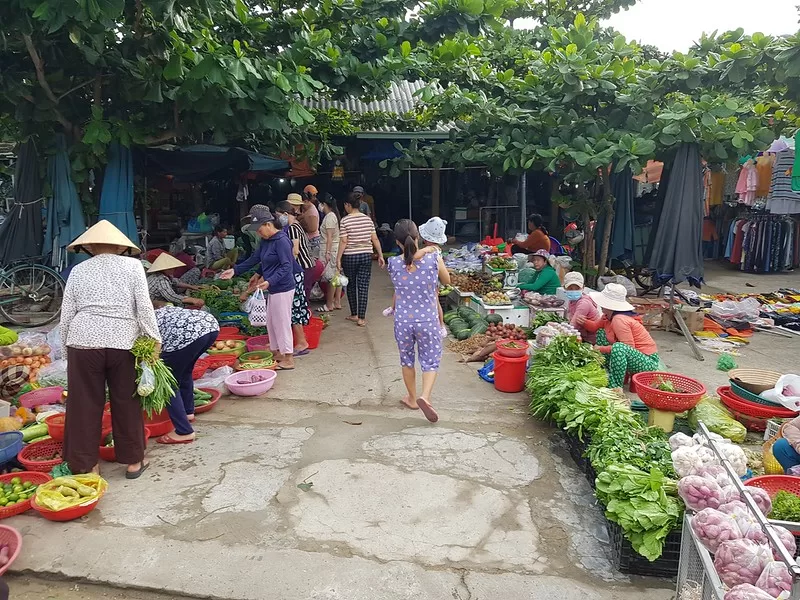
For international food, An Bang punches above its weight when it comes to variety of cafes and restaurants. For a beach community this small, you will not find a greater selection to choose from in Vietnam. Restaurants include pizzerias, burger joints, Mexican, French, and fusion dining.
Beachside lounges and bars, cafe roasteries, craft beer bars, sports bars, and street side cocktail bars serve as the local entertainment. It’s not a party town though, so the bars are not rowdy.
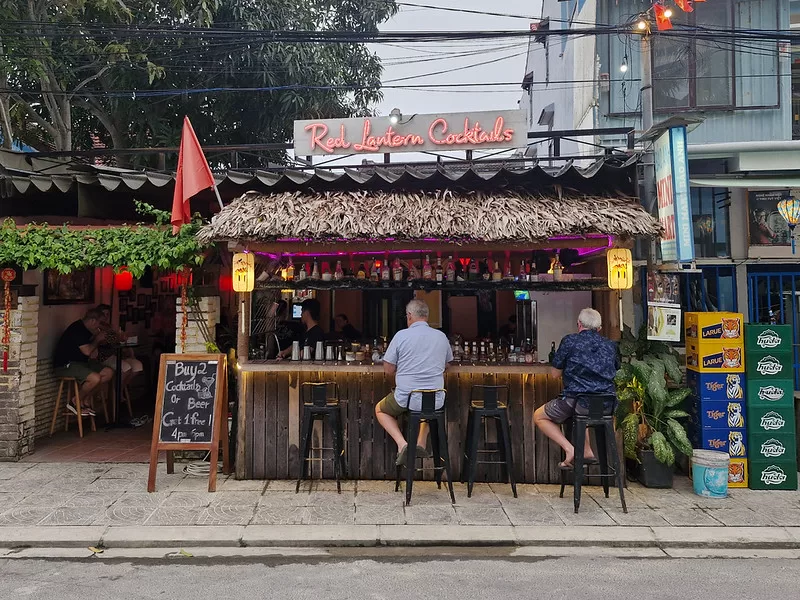
Where to Stay
An Bang features a variety of short-term accommodations, ranging from home stays and guesthouses, to beachside villas with swimming pools. There are no brand hotels here, which also helps to keep the cozy village vibe intact.
The easiest way to find long term accommodations is to check the local Facebook groups. A search for “expats in An Bang” or “living in An Bang” will yield a scroll of specific groups. You could also search for “expats in Hoi An” if you want to widen your search area. These expat groups include locals renting out their property, all at prices in line with the local rates. You can look, but I’m willing to be you won’t find a better deal on sites like Airbnb. (By the way, this accommodation hack applies to most destinations in Southeast Asia).
I recommend joining the groups before you arrive, then review the accommodation postings to get a feel for what the going rate is for rental types. Contacting the posters to ask if they have anything you are looking for is easy.
Weather Permitting
Because Vietnam is a geographically long country, there are distinctly different weather patterns between Northern, Central, and Southern Vietnam. Hoi An, in Central Vietnam, has its dry season from around February to August. In contrast, the dry season for Ho Chi Minh City in Southern Vietnam is from November to April. If you are nomadic and prefer to chase the dry season, then the seasonal difference between Southern and Central Vietnam makes it possible to extend your dry season year.
It’s important to note that the weather in Central Vietnam gets cold (by Vietnam’s standards) in the middle of the rainy season months. It doesn’t get as cold as in Hanoi, but you will want to wear jeans and a long sleeve top. Another key difference during the rainy season is that it rains longer in the day, while in Southern Vietnam, a typical rainy season day is to rain for an hour in the afternoon.
In Ho Chi Minh City it’s shorts weather all year round (they say the seasons there are dry and hot, and wet and hot), so some people prefer the more distinct change in seasons of Central Vietnam.
Getting Around
An Bang is very walkable by Vietnam standards. If you are staying in the town then you can walk or bike everywhere.
Hoi An’s old town can be reached by car or motorbike taxi, or it’s a pleasant cycle on a flat road through rice fields.

The nearest airport is Danang International Airport, a 45 minute drive from An Bang. The third-busiest airport in Vietnam, it has become a regional hub over the years. For travel to and from North America it’s easiest to first fly to the major East Asia hubs in Korea, Japan, and Taiwan.
The main train station of the North-South Railway is also in Danang (there is no train to Hoi An).
For me, what sets An Bang apart from other beach villages I’ve visited around the world is that it’s not far from big city amenities. Isolated beach villages may seem idyllic, but it’s reassuring to have access to hospitals and international airports should the need arise.
Small town living isn’t for everyone, and most people prefer the big city lifestyle in Da Nang. But if you prefer small town life, then An Bang Beach is worth a look.
Stay Ahead of the Journey!
Subscribe now for the latest in Travel News, International Destinations, Expat Life, Moving Abroad and Digital Nomad opportunities we’ve got your next adventure covered. Don’t miss out!
————————————
James Clark is an Australian currently based in Southeast Asia. He began expat life in London in 1999. Today, as a digital nomad he writes about travel and urban development issues at Nomadic Notes and Future Southeast Asia.
